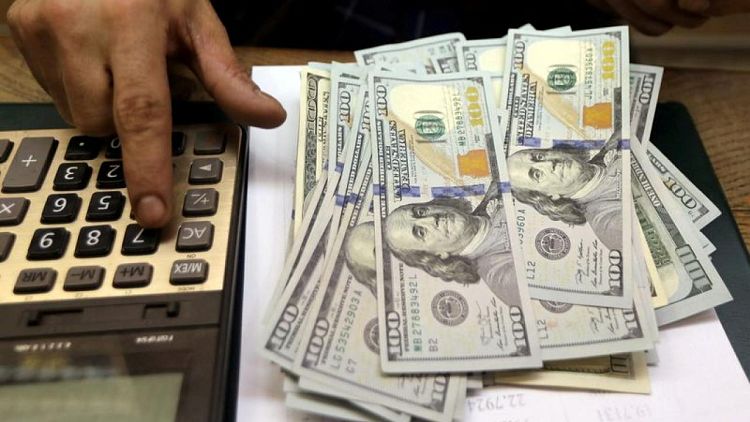By Gertrude Chavez-Dreyfuss
NEW YORK - The U.S. dollar rose to a one-week peak on Tuesday, posting its largest single daily gain in roughly two weeks, as new coronavirus outbreaks threatened to derail a global economic recovery, with the Australian and New Zealand dollars leading losses.
A decline in risk appetite benefits the U.S. dollar as a safe haven.
Fears over the spread of the highly infectious Delta variant of the virus are denting sentiment at a time markets are on edge after the Federal Reserve shocked traders with a hawkish tilt earlier this month.
Indonesia is grappling with record high cases, while Malaysia is set to extend a lockdown and Thailand has announced new restrictions. Spain and Portugal are imposing travel restrictions on unvaccinated British travelers, even as some states in Australia tightened movement curbs.
"Generally it's about increasing concerns over the Delta variant and it's just hurting the market somewhat," said Amo Sahota, director at corporate FX advisory firm Klarity FX in San Francisco.
"The market got its head turned with the severity of the some of the lockdowns in places such as Australia," he added.
In afternoon trading in New York, the dollar index, a gauge of its value against six major currencies, rose 0.2% to 92.077, posting its biggest daily percentage gain since around mid-June.
The greenback's correlation with general risk appetite as seen from the global daily caseloads of COVID-19 has weakened in recent weeks as market attention has been more focused on when the Fed will exit its massive policy stimulus. But that correlation has started to strengthen since last week.
"We went from a certain and stable background in Q2 to a lot more uncertainty going forward, and markets have to price that," said Simon Harvey, senior FX market analyst at Monex Europe in London.
The dollar also got a boost after data showed U.S. consumer confidence increased in June to its highest level since the COVID-19 pandemic started more than a year ago. That lifted expectations for strong economic growth in the second quarter.
The euro declined 0.2% to $1.1896, edging back toward the 2-1/2-month low touched on June 18.
Investors are also looking to Friday's U.S. nonfarm payrolls, with a new jobs forecast of 690,000 in June compared with 559,000 in May, according to a Reuters poll of economists.
"Stepped-up dollar buying is a sign of investor confidence that America's June jobs report could be one of the year's strongest," said Joe Manimbo, senior market analyst at Western Union Business Solutions in Washington.
Elsewhere, sterling gained 0.2% to $1.3842.
The Australian dollar, seen as a liquid proxy for risk appetite, fell 0.7% to US$0.7510 amid concerns over renewed COVID-19 lockdowns across parts of the country.
The New Zealand dollar was also lower in sympathy, down 0.7% at US$0.6988.



